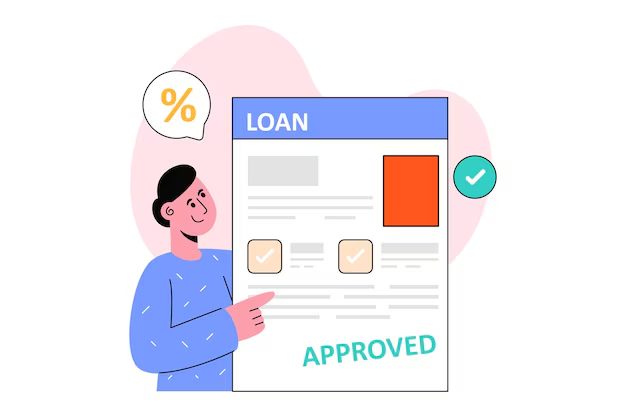The Philippines boasts a thriving entrepreneurial spirit, but turning your dream business into a reality often requires a financial boost. This is where business loans come in – a powerful tool to fuel your venture and navigate growth. However, navigating the world of business loans in the Philippines can feel overwhelming.
This comprehensive guide will provide you with a roadmap to understanding what is a business loan and how it works while also exploring the various types available in the Philippines, catering to diverse needs.
Additionally, we'll walk you through the application process, from assessing your eligibility to securing loan approval and managing repayments, dive into the various benefits of utilizing business loans in the Philippines, and also discuss some key factors to consider before taking this financial step.
By the end of this post, you'll be well-positioned to make informed decisions about business loans in the Philippines and unlock their potential, enabling your Philippine entrepreneurial journey to take flight and thrive!
Now, let's dive deeper into exactly what a business loan entails and how it operates in the Philippine context.
What is a Business Loan in The Philippines?

A business loan is a financial product designed to provide capital to businesses for various purposes, such as expansion, operational expenses, inventory purchases, or equipment upgrades.
In the Philippines, multiple financial institutions offer business loans, including commercial banks, government agencies, microfinance institutions, and online lending platforms. These loans have specific terms and conditions, including interest rates, repayment schedules, and eligibility criteria.
Great, now that we understand what business loans are, let's unpack how they actually work in the Philippines.
Also Read: Types of Business Loans in the Philippines
How Do Business Loans Work In The Philippines
Business loans are designed to provide businesses with the necessary capital to support various financial needs, such as expansion, managing operational expenses, purchasing inventory, or upgrading equipment.
To apply for a business loan, businesses typically need to submit an application to a financial institution, which can be a commercial bank, government agency, microfinance institution, or an online lending platform.
The application process involves providing detailed information about the business, including its financial health, operational history, and future projections. Additionally, businesses may need to submit financial documents such as balance sheets, income statements, tax returns, and, in some cases, collateral to secure the loan.
Once the application is submitted, the lender assesses the business's creditworthiness and financial stability to determine the loan amount, interest rate, and repayment terms. If approved, the business receives the loan amount in a lump sum or as a revolving credit line, depending on the loan type.
Repayment schedules can vary, with some loans requiring monthly payments over a fixed period, while others offer more flexible repayment options. The interest rates on business loans in the Philippines can vary based on the lender, the borrower's credit profile, and the type of loan.
Successful repayment of business loans can help improve the business's credit score, making it easier to secure additional funding in the future.
Secured Vs. Unsecured Loans - Key Differences
Knowing and understanding the differences between secured and unsecured loans is crucial for businesses and individuals alike when considering financing options. These two types of loans differ primarily in how they are backed and the risk they entail for borrowers and lenders.
Here’s a brief comparison between the two types of loans -
Secured Loans
- Require collateral, such as real estate, equipment, or vehicles, which the lender can seize if the borrower defaults on the loan.
- Typically have lower interest rates because they pose less risk to the lender, backed by collateral.
- Borrowers can generally obtain larger loan amounts since valuable assets secure the loan.
- Often have a more straightforward approval process since collateral reduces the lender's risk.
- Borrowers risk losing their collateral if they fail to repay the loan according to the terms.
Unsecured Loans
- Do not require collateral. These loans are approved based on the borrower's creditworthiness and financial history.
- Tend to have higher interest rates to compensate for the higher risk to the lender due to the lack of collateral.
- Loan amounts are usually smaller than secured loans based on the borrower's creditworthiness and income.
- Approval can be more stringent, requiring a strong credit score and financial history.
- Borrowers face higher financial penalties and credit damage for defaulting, but they do not risk losing specific assets.
With that foundation, it's important to understand the variety of business loans available to you.
Also Read: Choosing the Right Business Loan for Your Company's Growth
Types of Business Loans in The Philippines
Businesses in the Philippines have access to various loan options tailored to meet different financial needs and goals. These loans can be broadly categorized based on their purpose, structure, and the lending institutions that offer them.
It is crucial to understand the different types of business loans available, as it can help entrepreneurs choose the best financing option for their specific requirements, whether they want to expand operations, manage cash flow, or invest in new equipment.
Here is a brief look at some common business loan types commonly applied for in the Philippines.
1. Term Loans
These are traditional loans where businesses borrow a lump sum and repay it over a fixed period with interest. They are commonly used for significant investments like expansion, purchasing equipment, or real estate.
2. Revolving Credit Lines
Like credit cards, revolving credit lines allow businesses to borrow up to a specific limit, repay, and borrow again as needed. This type of loan helps manage cash flow and cover short-term expenses.
3. Microfinance Loans
Microfinance institutions offer loans designed for small businesses and entrepreneurs who may not qualify for traditional bank loans. These loans provide smaller loan amounts with more flexible terms.
4. Government-Backed Loans
These loans are provided by government agencies like the Small Business Corporation (SB Corp) and the Department of Trade and Industry (DTI). They often come with lower interest rates and favorable terms to support SMEs and stimulate economic growth.
5. Invoice Financing
This type of loan allows businesses to borrow against their accounts receivable. It provides immediate cash flow based on outstanding invoices, helping companies to manage operations while waiting for customers to pay.
6. Equipment Financing
Specifically designed for purchasing business equipment, these loans use the equipment itself as collateral. This helps businesses acquire necessary machinery or technology without a significant upfront investment.
Alright, now that you know the types of loans available, let's explore the benefits of securing one.
Also Read: Top 5 Legit Online Loan Apps in the Philippines
Benefits of Business Loans in The Philippines
Business loans play a vital role in the growth and sustainability of enterprises in the Philippines. They offer numerous advantages enabling businesses to seize opportunities, manage cash flow, and invest essential resources.
In this section of the blog post, we will explore some of the key benefits of business loans in the Philippines, highlighting how they can support business expansion, operational efficiency, and long-term success.
Here, take a look at a few compelling benefits of leveraging business loans in the Philippines.
- Fueling Growth and Expansion: Financing can unlock opportunities to invest in new equipment, marketing initiatives, or inventory, propelling your business to the next level.
- Enhancing Cash Flow Management: Business loans provide a safety net, allowing you to cover unexpected expenses or seasonal fluctuations without compromising your day-to-day operations.
- Building Business Credit: Responsible repayment of a business loan helps establish a positive credit history, making it easier to secure future financing for continued growth.
- Investing in Your Vision: By financing crucial aspects of your business, loans empower you to turn your aspirations into a tangible reality.
Next up, let’s talk about what you need to qualify for these business loans.
Learn More About N90's Fast Financing Solutions for Philippine SMEs. Overcome Cash Flow Hurdles Today. Enquire now!
Eligibility Criteria For Business Loans in The Philippines

Securing a business loan in the Philippines can be a game-changer, as it infuses your venture with the financial fuel it needs to thrive, but before accessing these valuable resources, understanding the eligibility criteria is crucial.
It is worth mentioning that eligibility criteria might vary depending on the specific loan type and lender, so it is crucial to research individual lenders and loan programs to understand their exact requirements. Additionally, some government programs or lenders might have additional criteria, such as industry focus or social impact initiatives.
Here, take a look at the crucial eligibility criteria for getting a business loan in the Philippines -
1. Registered Entity
Your business must be legally registered with the appropriate government agencies, such as the Department of Trade and Industry (DTI) or the Securities and Exchange Commission (SEC). It is also crucial to possess a valid business permit and license.
2. Operational History
Most lenders prefer businesses with a minimum operational history of 6 months to 3 years, depending on the loan type and lender's requirements. A demonstrated track record instills confidence in your ability to manage finances and repay the loan.
3. Financial Statements
Prepare well-organized financial statements, including income statements, balance sheets, and cash flow statements. These documents give lenders a clear picture of your business's financial performance, profitability, and debt situation.
4. Creditworthiness
Having a good credit history, both personal and business, if applicable, demonstrates responsible financial management and increases your chances of loan approval.
5. Clear Vision
Present a well-defined business plan outlining your company's goals, strategies, and future growth potential. This will showcase your vision and convince lenders of your ability to utilize the loan effectively.
6. Financial Projections
Demonstrate realistic financial projections for your business, including projected revenue, expenses, and profitability. This helps lenders assess the feasibility of your plans and your ability to repay the loan.
7. Clear Purpose
Clearly define the loan funds' intended use. Aligning the loan purpose with your business plan demonstrates responsible borrowing and a focus on growth.
8. Collateral Availability
For secured loans, lenders assess the value and ownership of the collateral you offer, such as property or equipment, to mitigate risk.
Understanding the eligibility criteria is just the beginning; let's walk through the actual application process step-by-step.
Also Read: Understanding Collateral Loans: Types, Pros, and Cons
Application Process For Business Loans in The Philippines
Applying for a business loan in the Philippines involves a series of steps designed to assess the borrower's financial health, business stability, and creditworthiness. This process typically includes gathering necessary documentation, filling out application forms, and undergoing a lender review.
In this section of the article, we will outline all the essential steps involved in applying for a business loan in the Philippines, providing a foundation for a smooth and efficient application experience.
Here, take a look at all the essential steps involved in applying for a business loan in the Philippines -
1. Pre-Application Preparation
- Research and Compare: Before diving in, research different lenders and loan options. Compare interest rates, terms, and eligibility criteria to find the best fit for your business needs.
- Assess Your Business: Evaluate your current financial health, including profitability, debt levels, and creditworthiness. This self-assessment helps determine the loan amount you realistically require and strengthens your application.
- Gather Required Documents: Start compiling the documents typically requested by lenders, such as business registration papers, financial statements, and a business plan.
2. Application Submission
- Lender's Portal or Online Form: Many lenders have transitioned to online application processes. Locate the lender's online portal or application form and meticulously fill out the required information.
- Attach Supporting Documents: Upload all the documents you've gathered during the pre-application preparation stage. Ensure everything is clear, organized, and scanned in a compatible format.
- Submit and Review: Once you've reviewed all details and attached documents, submit your application electronically. Double-check for any errors or missing information before hitting submit.
3. Loan Evaluation and Approval
- Review and Analysis: The lender will attentively assess your application, analyzing your business financials, creditworthiness, and the viability of your business plan.
- Potential Contact: Lenders might contact you for additional information or clarifications regarding your application. Be prepared to answer their questions promptly and professionally.
- Approval Notification: The lender will notify you of the application decision within their specified timeframe, ranging from a few days to a week, depending on their internal processes.
- Loan Offer (if approved): If approved, the lender will present a loan offer outlining the loan amount, interest rate, repayment terms, and any specific conditions.
4. Loan Acceptance and Disbursement
- Review and Negotiation (Optional): Carefully review the loan offer and terms. If applicable, you might have some room to negotiate for a better interest rate or terms depending on your business's strength.
- Acceptance and Signing: Once you're comfortable with the loan offer, proceed with signing the loan agreement and fulfilling any final requirements.
- Disbursement of Funds: Upon successfully completing all conditions, the lender will disburse the loan amount according to the agreed-upon terms.
Now, as you get ready to apply, it’s crucial to consider the factors that will influence your loan amount and repayment terms.
Top Factors Influencing Loan Amount & Repayment Schedule When Applying For a Business Loan in The Philippines
In the Philippines, lenders consider several critical aspects when determining how much to lend and the repayment terms. These factors include the borrower’s creditworthiness, business financial health, collateral availability, and the specific purpose of the loan.
By comprehensively understanding these factors, businesses can better prepare their loan applications, ensuring they present a strong case to lenders and secure favorable loan terms.
This section will highlight all the key elements influencing loan amounts and repayment schedules when applying for a business loan in the Philippines. Here, take a look at them -
1. Business Needs: Your business's legitimate financial needs are the primary factor influencing the loan amount. Clearly define the purpose of the loan and provide documentation to justify the requested amount.
2. Financial Health: Your business's financial health, including profitability, debt-to-income ratio, and creditworthiness, heavily influences the loan amount offered. A strong financial position allows you to qualify for larger loans.
3. Collateral Value (Secured Loans): The value of the collateral you offer (property, equipment) plays a significant role in secured loans. The loan amount typically won't exceed a certain percentage of the collateral's appraised value.
4. Lender's Risk Tolerance: Each lender has its own risk tolerance. Businesses with a longer operational history and established track record might qualify for larger loans compared to newer ventures.
5. Loan Amount: The loan amount itself influences repayment terms. Larger loans typically have longer repayment periods to spread out the monthly payments and make them more manageable.
6. Interest Rate: The interest rate significantly impacts repayment terms. Higher interest rates lead to higher monthly payments, even with longer repayment periods. Negotiating a lower interest rate can make repayment more manageable.
7. Lender's Policies: Each lender has its own established repayment terms and policies. Some might offer flexible repayment options like balloon payments or prepayment incentives.
8. Your Business Cash Flow: Ultimately, the repayment terms should align with your business's projected cash flow. Ensure you can comfortably manage the monthly payments without putting your business’ operational stability at risk.
As we wrap up, let’s summarize the key takeaways to keep in mind on your business loan journey.
Conclusion
The Philippines brims with passionate entrepreneurs, but transforming your vision into a thriving business often requires a financial boost. This guide has carefully explained the world of business loans, equipping you with all the information you need to navigate the process confidently.
Key Points to Remember:
- Business loans provide the fuel to invest in growth, manage cash flow, build credit, and turn aspirations into reality.
- Secured loans offer lower interest rates in exchange for collateral, while unsecured loans are faster but typically come with higher interest rates.
- Eligibility criteria typically involve business registration, financial health, a well-defined business plan, and a clear loan purpose.
- A compelling application package, including strong financials and a strategic use of funds, can significantly increase your chances of approval.
- Carefully consider loan amount, interest rates, repayment terms, and eligibility criteria to select the loan option that best aligns with your business needs.
By understanding these key concepts and approaching the process strategically, you can harness the power of business loans to propel your Filipino venture toward long-term success.
Frequently Asked Questions
1. How do you explain a business loan?
A business loan is like a jumpstart for your company. You borrow money from a bank or lender to invest in equipment, marketing, or inventory. You pay it back with interest over time, but it can give your business the immediate boost it needs to grow!
2. How much time does it take to get a business loan?
Here is a list of some of the most popular business loans in the Philippines and the time it takes for them to provide the requested loan -
- Term Loans - With a day to a few months
- SBA Loans - 30 days to 90 days
- Bank Loans - 2 weeks to a few months
- Lines of Credit - A few days to 2 weeks
3. How many years should it take to pay off a business?
There's no one-size-fits-all answer! It depends on the loan amount, interest rate, and your business's cash flow. Loans can range from short-term, lasting a few months, to long-term, lasting for up to 20 years, depending on the purpose and type of loan.
4. What is the difference between a personal loan and a business loan?
Personal loans are for you, while business loans are for your business. Personal loans don't require any kind of collateral but have higher interest rates. You can use them for anything personal, like a car or home improvement. Business loans often need collateral and have lower interest rates. They must be used for business purposes, like starting an inventory or marketing campaign.













